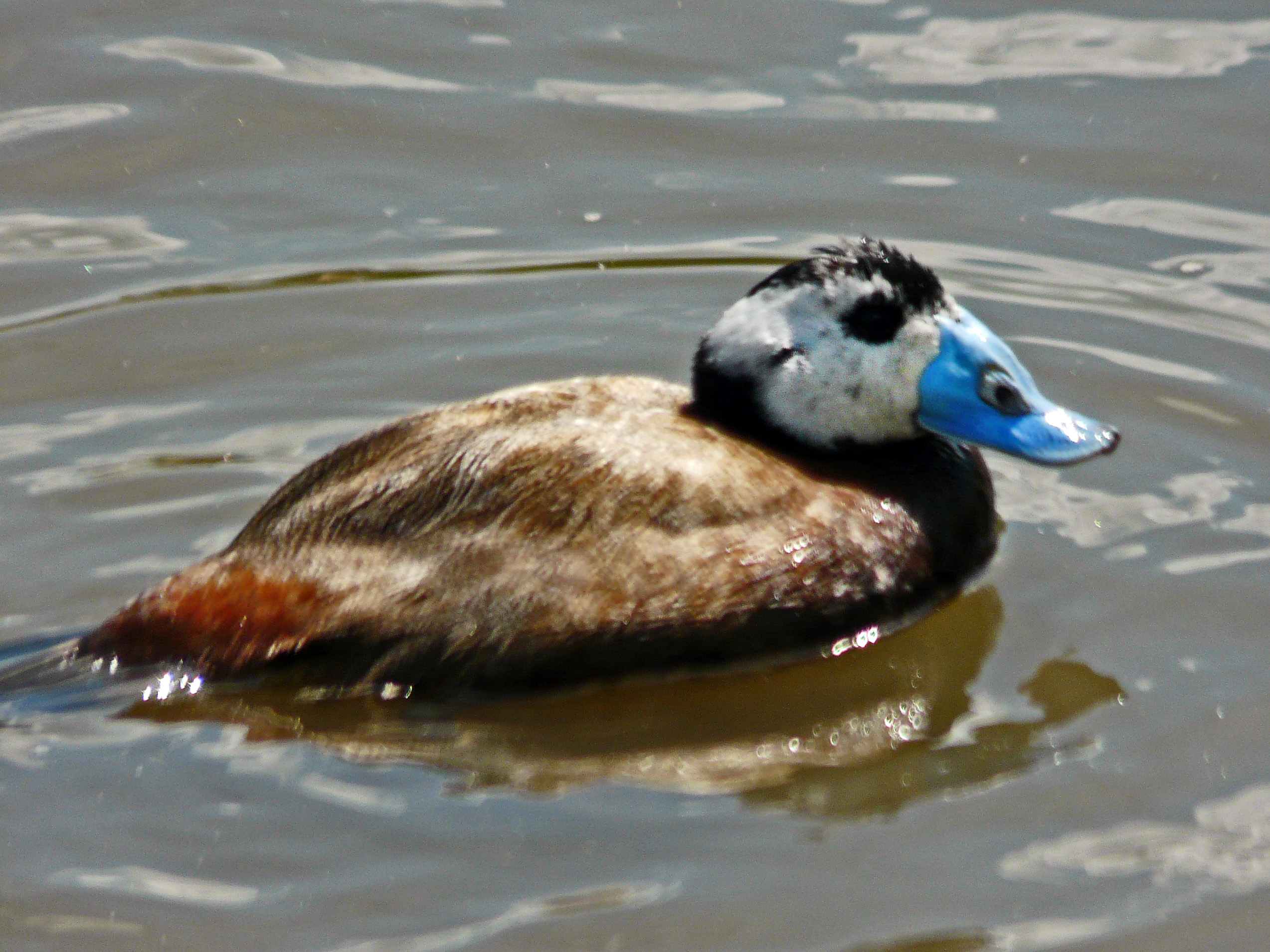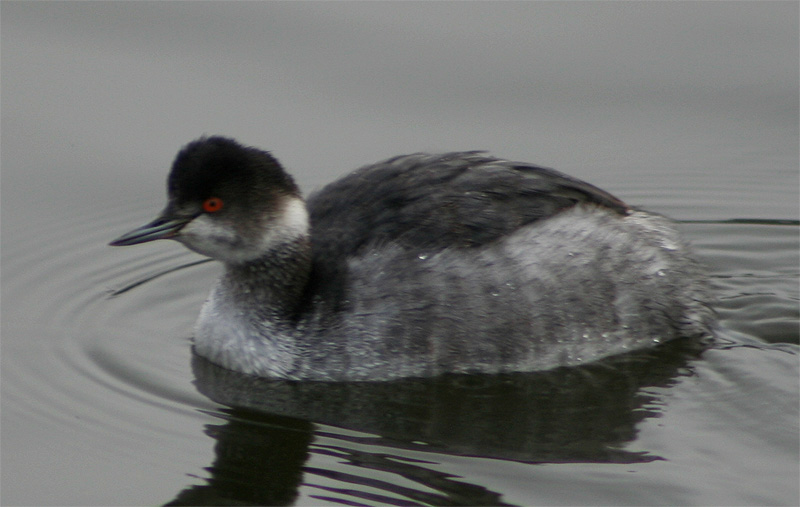|
Lake Erçek
Lake Erçek ( tr, Erçek Gölü, hy, Արճակ լիճ, ku, Gola Erçekê) is an endorheic salt lake in Van Province in eastern Turkey, about east of Lake Van. The lake sits at an elevation of about , and has an area of and a mean depth of . The northern and western shores are steep and rocky, whereas the southern and eastern shores slope gently with mudflats and coastal plains. Geology and geography Early research described Lake Erçek as having been formed through volcanic activity; however, recent research indicates that it is a tectonic lake. The lake's basin was formed by north–south trending faults during the Upper Pleistocene. It appears that the lake did not rise much above its current level during the Upper Pleistocene and Holocene, based on examination and radiocarbon dating of core samples of lake sediments. Research suggests the lake did not overflow its basin during this period. The lake's main inflow is from the Memedik Çayı (also known as the Büyükçaylak ... [...More Info...] [...Related Items...] OR: [Wikipedia] [Google] [Baidu] |
Van Province
Van Province ( tr, Van ili, ku, Parezgêha Wanê, Armenian: Վանի մարզ) is a province in the Eastern Anatolian region of Turkey, between Lake Van and the Iranian border. It is 19,069 km2 in area and had a population of 1,035,418 at the end of 2010. Its adjacent provinces are Bitlis to the west, Siirt to the southwest, Şırnak and Hakkâri to the south, and Ağrı to the north. The capital of the province is the city of Van. The province is considered part of Western Armenia by Armenians and was part of ancient province of Vaspurakan. The region is considered to be the cradle of Armenian civilization. Before the Armenian genocide, Van Province was part of six Armenian vilayets. A majority of the province's modern day population is Kurdish. The current Governor is Mehmet Emin Bilmez. Demographics The province is mainly populated by Kurds and considered part of Turkish Kurdistan. The province had a significant Armenian population until the genocide in 1915. In ... [...More Info...] [...Related Items...] OR: [Wikipedia] [Google] [Baidu] |
White-headed Duck
The white-headed duck (''Oxyura leucocephala'') is a small diving duck some long. The male has a white head with black crown, a blue bill, and reddish-grey plumage. The female has a dark bill and rather duller colouring. Its breeding habitat is lakes with open water and dense vegetation at the margin. It dives under water and feeds on aquatic vegetation as well as some animal matter. It is more likely to swim away from a perceived threat than to fly. This duck is known from Spain, North Africa, Western Asia and Central Asia. Populations are declining, mostly due to loss of habitat and pollution, and the International Union for Conservation of Nature has rated the bird's status as "endangered". Taxonomy and systematics The white-headed duck was originally described as ''Anas leucocephala'' by Giovani Antonio Scopoli in 1769. It is currently in the genus Oxyura. Other generic synonyms used in the past include ''Erismatura'', ''Cerconectes'', ''Gymnura'', ''Undina'', ''Bythone ... [...More Info...] [...Related Items...] OR: [Wikipedia] [Google] [Baidu] |
Lakes Of Turkey
Natural lakes Reservoir and dam lakes See also * Geography of Turkey * Regions of Turkey * Rivers of Turkey * Dams and reservoirs of Turkey * Turkish Lakes Region, in southwest Anatolia {{Turkey topics * Turkey Turkey ( tr, Türkiye ), officially the Republic of Türkiye ( tr, Türkiye Cumhuriyeti, links=no ), is a list of transcontinental countries, transcontinental country located mainly on the Anatolia, Anatolian Peninsula in Western Asia, with ... Lakes ... [...More Info...] [...Related Items...] OR: [Wikipedia] [Google] [Baidu] |
Çukurova University
Çukurova University ( tr, Çukurova Üniversitesi) is a public university in Adana, Turkey. The university has sixteen faculties, three colleges, seven vocational colleges, three institutes and twenty six research and application centers. The university campus is located away from Adana city center, by the Seyhan Dam Lake. The university, with its 1903 teaching staff, offers courses to over 40,000 undergraduate, post graduate and doctorate students. The library has internet access and houses national and international publications. Computer rooms are available for student use campus-wide. These computer rooms are also used for computer-assisted education and scientific research. The university also offers its students recreational facilities including an indoor sports center and swimming pool, a boathouse and sports grounds. Students can make the best of their leisure time in any of the 29 student clubs. The students of the university have the opportunity to do practic ... [...More Info...] [...Related Items...] OR: [Wikipedia] [Google] [Baidu] |
Gull-billed Tern
The gull-billed tern (''Gelochelidon nilotica''), formerly ''Sterna nilotica'', is a tern in the family Laridae. It is widely distributed and breeds in scattered localities in Europe, Asia, northwest Africa, and the Americas. The Australian gull-billed tern was previously considered a subspecies. Taxonomy The gull-billed tern was formally described in 1789 by the German naturalist Johann Friedrich Gmelin in his revised and expanded edition of Carl Linnaeus's ''Systema Naturae''. He placed it with terns in the genus ''Sterna'' and coined the binomial name ''Sterna nilotica''. Gmelin based his description on the "Egyptian tern" that had been described in 1785 by the English ornithologist John Latham in his book ''A General Synopsis of Birds''. Latham had in turn based his own account on that by the Swedish naturalist Fredrik Hasselquist that was published in 1757. The gull-billed tern was moved to the resurrected genus ''Gelochelidon'' based on a molecular phylogenetic study pu ... [...More Info...] [...Related Items...] OR: [Wikipedia] [Google] [Baidu] |
Pied Avocet
The pied avocet (''Recurvirostra avosetta'') is a large black and white wader in the avocet and stilt family, Recurvirostridae. They breed in temperate Europe and across the Palearctic to Central Asia then on to the Russian Far East. It is a migratory species and most winter in Africa or southern Asia. Some remain to winter in the mildest parts of their range, for example in southern Spain and southern England. The pied avocet is one of the species to which the Agreement on the Conservation of African-Eurasian Migratory Waterbirds (AEWA) applies. Taxonomy The pied avocet was one of the many bird species originally described by Carl Linnaeus in his landmark 1758 10th edition of ''Systema Naturae'', where it was given the binomial name of ''Recurvirostra avosetta''. This species gets its English and scientific names from the Venetian word ''avosetta''. It appeared first in Ulisse Aldrovandi's ''Ornithologia'' (1603). While the name may refer to black and white outfits once w ... [...More Info...] [...Related Items...] OR: [Wikipedia] [Google] [Baidu] |
Black-necked Grebe
The black-necked grebe or eared grebe (''Podiceps nigricollis'') is a member of the grebe family of water birds. It was described in 1831 by Christian Ludwig Brehm. There are currently three accepted subspecies, including the nominate subspecies. Its breeding plumage features a distinctive ochre-coloured plumage which extends behind its eye and over its ear coverts. The rest of the upper parts, including the head, neck, and breast, are coloured black to blackish brown. The flanks are tawny rufous to maroon-chestnut, and the abdomen is white. When in its non-breeding plumage, this bird has greyish-black upper parts, including the top of the head and a vertical stripe on the back of the neck. The flanks are also greyish-black. The rest of the body is a white or whitish colour. The juvenile has more brown in its darker areas. The subspecies ''californicus'' can be distinguished from the nominate by the former's usually longer bill. The other subspecies, ''P. n. gurneyi'', can be dif ... [...More Info...] [...Related Items...] OR: [Wikipedia] [Google] [Baidu] |
Common Shelduck
The common shelduck (''Tadorna tadorna'') is a waterfowl species of the shelduck genus, '' Tadorna''. It is widespread and common in the Euro-Siberian region of the Palearctic, mainly breeding in temperate and wintering in subtropical regions; in winter, it can also be found in the Maghreb. Fossil bones from Dorkovo (Bulgaria) described as ''Balcanas pliocaenica'' may actually belong to this species. More likely, they are an extinct species of '' Tadorna'' (if not a distinct genus) due to their Early Pliocene age; the present species is not unequivocally attested from the fossil record until some 2–3 million years later (Late Pliocene/ Early Pleistocene). Taxonomy The common shelduck was formally named by the Swedish naturalist Carl Linnaeus in 1758 in the tenth edition of his ''Systema Naturae'' under the binomial name ''Anas tadorna''. Linnaeus largely based his description on "The Sheldrake or Burrough-Duck" that had been described and illustrated in 1731 by the English ... [...More Info...] [...Related Items...] OR: [Wikipedia] [Google] [Baidu] |
Ruddy Shelduck
The ruddy shelduck (''Tadorna ferruginea''), known in India as the Brahminy duck, is a member of the family Anatidae. It is a distinctive waterfowl, in length with a wingspan of . It has orange-brown body plumage with a paler head, while the tail and the flight feathers in the wings are black, contrasting with the white wing-coverts. It is a migratory bird, wintering in the Indian subcontinent and breeding in southeastern Europe and central Asia, though there are small resident populations in North Africa. It has a loud honking call. The ruddy shelduck mostly inhabits inland water-bodies such as lakes, reservoirs and rivers. The male and female form a lasting pair bond and the nest may be well away from water, in a crevice or hole in a cliff, tree or similar site. A clutch of about eight eggs is laid and is incubated solely by the female for about four weeks. The young are cared for by both parents and fledge about eight weeks after hatching. In central and eastern Asia, p ... [...More Info...] [...Related Items...] OR: [Wikipedia] [Google] [Baidu] |
Greater Sandplover
The greater sand plover (''Charadrius leschenaultii'') is a small wader in the plover family of birds. The spelling is commonly given as "greater sandplover" or "greater sand-plover", but the official British Ornithologists' Union spelling is "Greater Sand Plover". The genus name ''Charadrius'' is a Late Latin word for a yellowish bird mentioned in the fourth-century Vulgate. It derives from Ancient Greek ''kharadrios'' a bird found in ravines and river valleys (''kharadra'', "ravine"). The specific ''leschenaultii'' commemorates the French botanist Jean Baptiste Leschenault de la Tour. Distribution It breeds in the semi-deserts of Turkey and eastwards through Central Asia. It nests in a bare ground scrape. This species is strongly migratory, wintering on sandy beaches in East Africa, South Asia and Australasia. It is a rare vagrant in western Europe, where it has been recorded as far west as Iceland. It has been spotted twice in North America, the most recent being on May 14 ... [...More Info...] [...Related Items...] OR: [Wikipedia] [Google] [Baidu] |
Kentish Plover
The Kentish plover (''Charadrius alexandrinus'') is a small cosmopolitan shorebird (40-44 g) of the family Charadriidae that breeds on the shores of saline lakes, lagoons, and coasts, populating sand dunes, marshes, semi-arid desert, and tundra.Székely, T., A. Argüelles-Ticó, A. Kosztolányi and C. Küpper. 2011. Practical guide for investigating breeding ecology of Kentish plover ''Charadrius alexandrinus'', Unpublished Report, University of Bathdel Hoyo, J., Collar, N.J., Christie, D.A., Elliott, A. and Fishpool, L.D.C. 2014. HBW and BirdLife International Illustrated Checklist of the Birds of the World, Lynx Edicions BirdLife International, Barcelona, Spain and Cambridge, UK Both male and female birds have pale plumages with a white underside, grey/brown back, dark legs and a dark bill; however, additionally the male birds also exhibit very dark incomplete breast bands, and dark markings either side of their head, therefore the Kentish plover is regarded as sexually dimorph ... [...More Info...] [...Related Items...] OR: [Wikipedia] [Google] [Baidu] |






